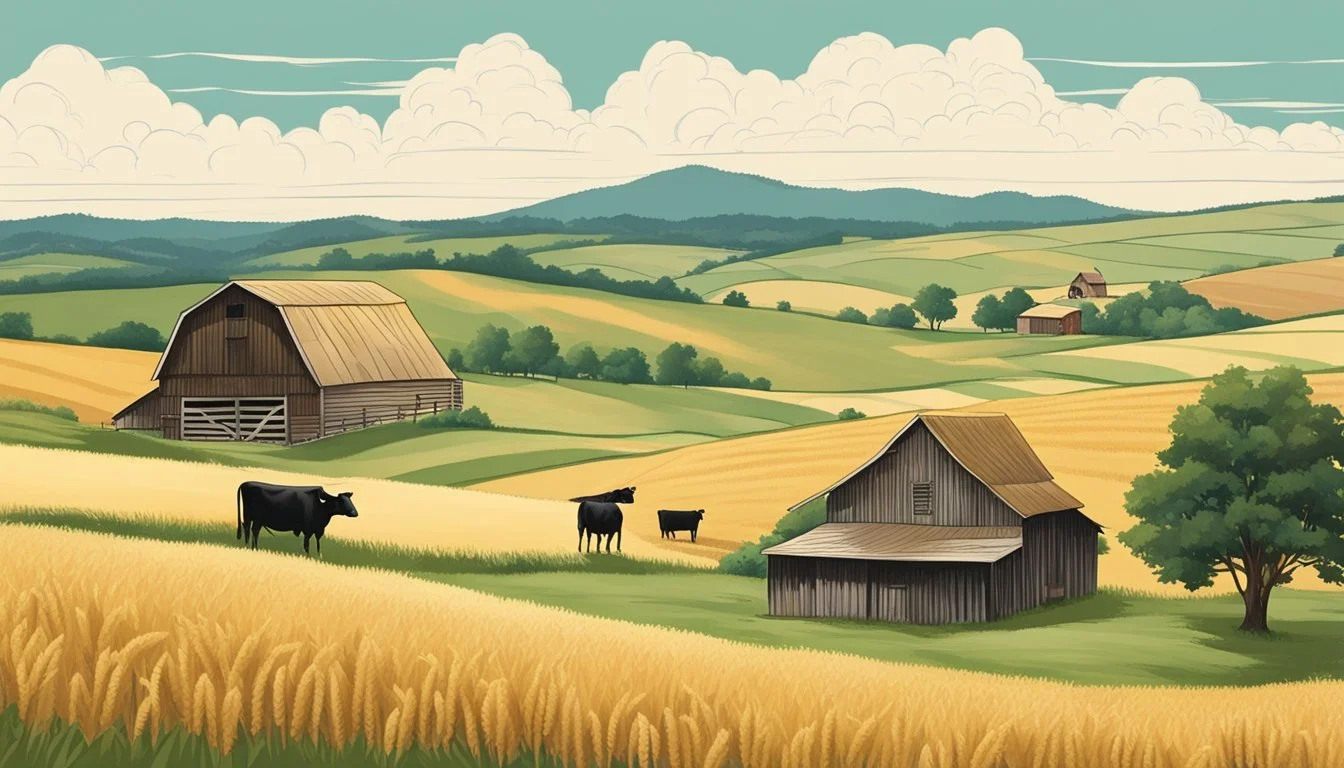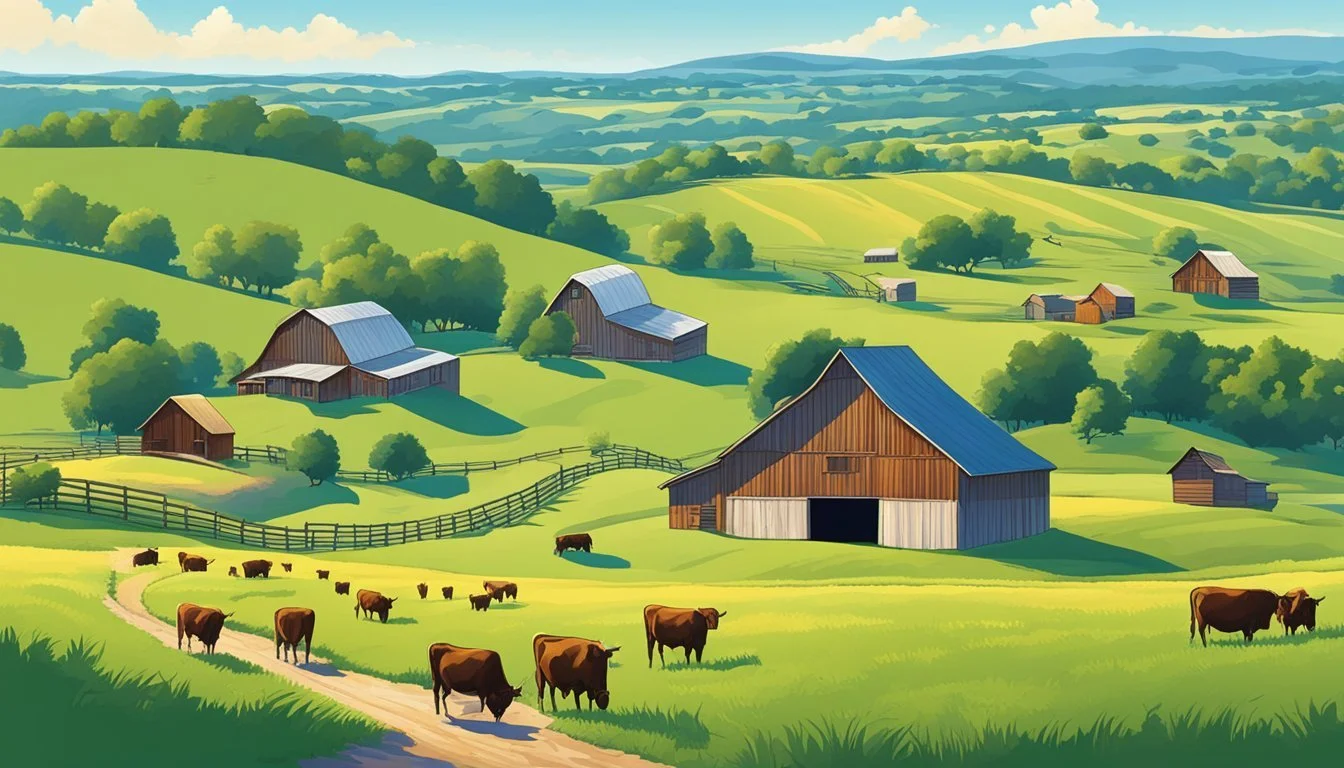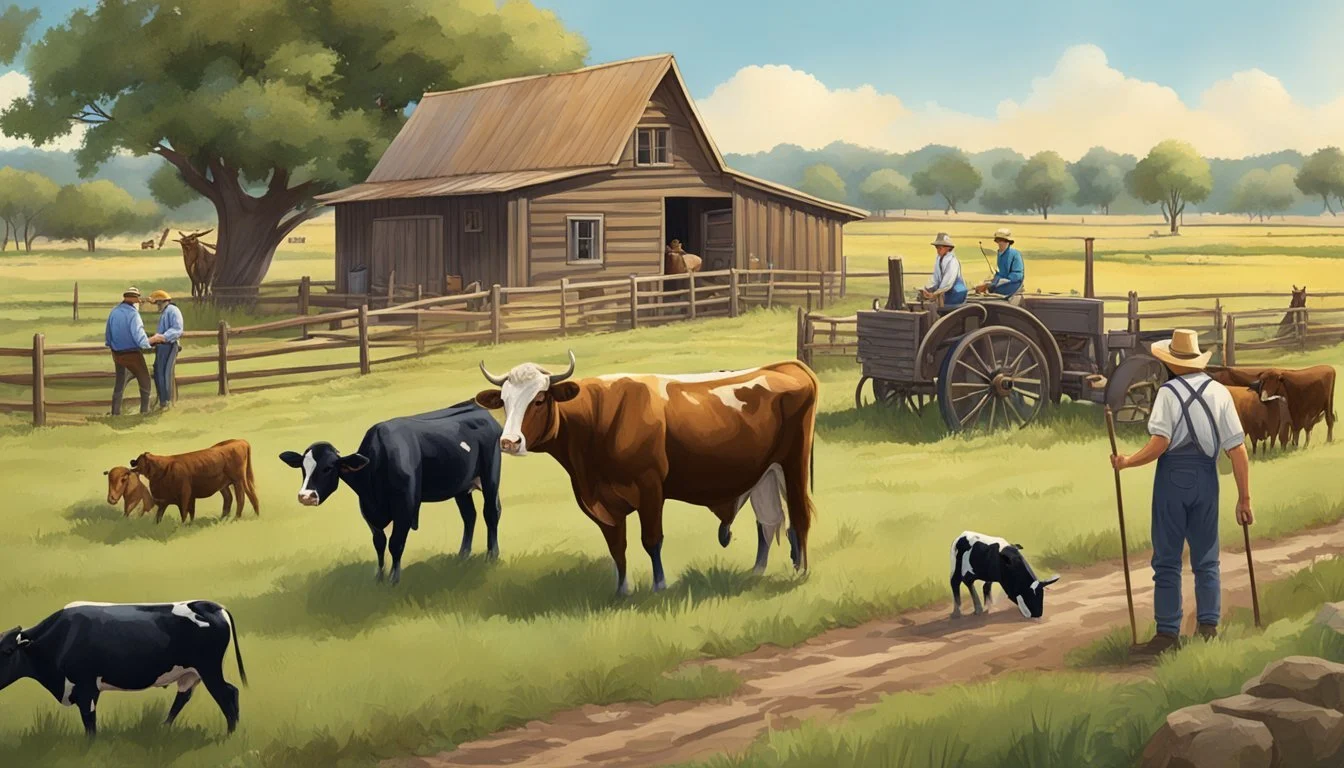The German Roots of Texas Ranching and Agriculture
Cultural Legacy and Influence
The Texas landscape has long been characterized by vast ranches and a strong agricultural presence, traits that have been deeply influenced by the arrival of German immigrants in the early 19th century. Settling in Texas since the 1830s, German immigrants quickly became integral to the development of ranching and farming in the state. They brought with them a variety of agricultural techniques and a commitment to community that would go on to shape the industry. Their legacy is visible across the rolling hills and fertile plains of Texas, where the methods and culture of German settlers have been woven into the fabric of the state’s identity.
In particular, the South-central region of Texas, often referred to as the Hill Country, became a hub for these German Texans. Here, they established farms and ranches, contributing to the economic vitality of Texas. Names like Robert J. Kleberg and Admiral Chester W. Nimitz highlight the prominence of German Texans who became prominent figures in their fields. The communities these settlers formed were often tight-knit, maintaining their heritage through the establishment of schools, churches, and cultural organizations that allowed them to retain their language and customs amidst a growing Texan culture.
The impact of German immigrants on Texas ranching and farming is not just a chapter of the past; it is a continuous influence. As ranchers, farmers, and community leaders, German Texans played a pivotal role in Texas’s agricultural history and continue to be a part of its present and future. Their contributions have left an indelible mark on the state’s economic and social landscape, demonstrating the complex and enriching effects of cultural integration.
Historical Backdrop of German Immigration
In the 19th century, German immigrants profoundly influenced Texas' agricultural and ranching heritage. They established enduring settlements, contributed to the state’s cultural diversity, and played significant roles in early Texan conflicts.
Coming to America: The Texas Voyage
German immigration to Texas began in the 1830s, with individuals and families seeking opportunities in the New World. Most voyages embarked from German ports, with immigrants typically arriving in the United States through the bustling seaports of New York and Philadelphia. From there, they ventured to Texas, often traveling by land across states like Missouri, Illinois, and Iowa, or by waterways, navigating the Mississippi River towards their new homeland, drawn by the promise of land and the prospect of freedom.
The Adelsverein and German Settlements
The Society for the Protection of German Immigrants in Texas, better known as the Adelsverein, played a pivotal role in orchestrating German emigration to Texas. In 1842, this society was formed by nobleman in Germany aiming to settle thousands of German immigrants in Texas. The Adelsverein facilitated the founding of several key German towns, including New Braunfels in 1845 and Fredericksburg in 1846, carving out a "German belt" in the heart of Texas. These settlements became anchors for subsequent immigrants, who would continue to build communities, blending German customs with Texan culture.
Germans in the Texas Revolution
Germans were present during critical moments in Texas history, including the Texas Revolution. As early settlers, they participated in the struggle for independence from Mexico, with some joining the Texian Army, contributing to the establishment of the Republic of Texas. The city of San Antonio saw the engagement of German immigrants in the conflict, symbolizing their commitment to their new homeland and intertwining German heritage with the foundational narrative of the Texas Revolution.
Agricultural Beginnings
The inception of agriculture in Texas is marked by the integration of different cultures and techniques which led to a unique blend of livestock management and crop cultivation.
Livestock and Ranch Formation
Texas ranching finds its origins in the intermingling of Spanish and Native American practices. Spanish missionaries were pivotal in introducing cattle and horses, setting the foundation for ranching operations. By 1869, innovations such as fencing, introduced by ranchers like Kenedy, began to formalize the concept of enclosed ranching in Texas.
Introduction of Crops and Techniques
German immigrants, arriving during the nineteenth century, brought with them a variety of crops and farming techniques which they adapted to the Texan landscape. They cultivated a range of crops, thus diversifying Texas's agricultural output. Their influence is apparent in many of the farming methods used in Texas that originated from German agricultural practices.
Spanish and German Collaboration
The collaboration between Spanish settlers and German immigrants led to a unique agricultural landscape in Texas. Spanish influence provided an initial agricultural foundation which was expanded upon by the Germans. This combination was characterized by a practical approach to both livestock management and crop production, blending Spanish ranching heritage with German farming innovation.
Ranching in Texas Hill Country
Ranching has been a defining element of Texas Hill Country's economy and culture, significantly influenced by German settlers. The region's transformation into a leading agricultural hub is underscored by its cattle kingdoms, innovative livestock management techniques, and diverse expansion in livestock varieties.
The Rise of Cattle Kingdoms
In the late 19th century, cattle ranching burgeoned in Texas Hill Country, notably with the Texas Longhorn, a breed that became emblematic of the era. The rise of cattle kingdoms was possible due to the region's ample grazing lands and a climate conducive to cattle herding. Estates such as the King Ranch have become legendary, not only for their size but also due to their role in the development of new breeds, like the Santa Gertrudis.
Influences on Livestock Management
Livestock management practices in Hill Country were profoundly affected by the expertise of German ranchers, who applied their knowledge to the Texas terrain. They implemented rotational grazing and selective breeding to enhance herd quality. Additionally, the management of herds on horseback became a foundational aspect of what is recognized globally as the cowboy tradition.
Expansion of Livestock Varieties
With time, the livestock portfolio in Texas Hill Country expanded beyond cattle to include sheep and goats, with significant production of wool and mohair. This diversification showcased an adaptation to the varying terrains and economic demands, allowing the region to flourish in different facets of ranching and agriculture.
Industrial and Economic Growth
The German influence on Texas ranching and agriculture coincided with a period of significant industrial and economic development. This growth was buoyed by railroads, marked by economic ups and downs such as the Panic of 1873, and characterized by a broadening of agricultural activities beyond cattle ranching, with ventures such as cotton farming playing a pivotal role.
Railroads and Market Expansion
The advent of railroads in the late 19th century was a major catalyst for economic growth in Texas. Following the Civil War, Texans saw an explosive growth in railroad construction, which opened new markets for ranch and farm products. German immigrants contributed significantly to this expansion, providing both labor and trade connections. Railroads connected rural areas with cities, fundamentally changing the scope of agricultural business, allowing for faster movement of stock and other goods.
Financial Crises and Resilience
The Panic of 1873 revealed the vulnerability of the Texas economy, which had become heavily reliant on farming and ranching. Despite this setback, the resilience of the agricultural sector, strengthened by German farming techniques and communal support systems, allowed for a recovery and continuity of growth in subsequent years. Their innovations in agriculture often led to more sustainable farming practices, which helped industries bounce back.
Diversification of Texas Agriculture
Texas agriculture in the late 19th century was not limited to cattle ranching. German immigrants played a substantial role in diversifying the state's economy by introducing various crops, particularly cotton. Cotton became a leading industry for Texas, fueling further economic growth and contributing to a more diverse economic foundation. This diversification was important for the state’s ability to withstand economic fluctuations and ushered in a new era of agricultural innovation.
Cultural Contributions and Legacy
The German influence in Texas has fostered a unique blend of cultural practices, especially evident in festivals, language, and efforts to honor their heritage.
Festivals and Culinary Traditions
German Texans have made lasting cultural contributions, particularly through food and celebrations. Wurstfest in New Braunfels stands out as an iconic festival, drawing over 100,000 participants annually to enjoy traditional German sausages, beer, and cultural events in November. Culinary heritage is highlighted by authentic German dishes like schnitzel and sauerbraten, paired with locally produced beer and wine. Fredericksburg, a town proud of its German roots, hosts Oktoberfest, an annual event featuring German music, dance, and an array of German foods. The town is also known for its quality peach orchards, a testament to the German dedication to agriculture.
Notable Foods and Beverages:
Schnitzel
Sauerbraten
German-style beer
Texan wine
Language and Community
The Texas German dialect stands as a unique linguistic development, blending German roots with Texan speech patterns. Although its use has dwindled, efforts by linguists and community groups aim to preserve this distinct aspect of German Texan culture. German influence extends to place names, family names, and community events, maintaining the visibility of German roots in the social fabric of Central Texas.
Key Linguistic Features:
Blended German-Texan Dialects
Historically German-speaking Communities
Preservation of German Texan Heritage
Dedication to preserving German Texan heritage is clear through the establishment of museums and historical sites. These venues educate visitors about the history and cultural contributions of German settlers. The Sauer-Beckmann Farmstead in Fredericksburg is a living history museum, showcasing early German Texan farming practices. The legacy is also maintained through educational efforts and historic preservation of buildings and sites associated with early German settlers.
Cultural Preservation Efforts:
Living History Farms
German Texan Museums
Historic Buildings and Sites
Modern Ranching and Farming Practices
The integration of Germany's rich agricultural heritage with modern sustainable practices and genetic advancements plays a vital role in the evolution of Texas ranching and farming.
Sustainable Agriculture and Innovation
Texas agriculture has embraced sustainable farming techniques to ensure long-term productivity and environmental health. Water conservation methods, such as drip irrigation and efficient watering systems, are widely utilized to combat the state's occasional drought conditions. Texas farmers also incorporate crop rotation and cover cropping to maintain soil health and reduce erosion. Innovation extends to Texas's wine industry, which capitalizes on carefully selected grape varieties suited to the local climate, thus contributing to the state's growing reputation as a wine producer.
Livestock Breeding and Genetics
Livestock breeding in Texas reflects a commitment to quality and efficiency. Ranchers leverage advances in genetic technology to enhance traits like disease resistance, growth rates, and meat quality in cattle, which is central to Texas ranching. Innovative breeding programs often involve the use of artificial insemination and embryo transfer to introduce and amplify desirable genetic traits. This focus on livestock genetics ensures the state remains at the forefront of producing superior breeds, such as the iconic Texas Longhorn, recognized for its hardiness and adaptability.








